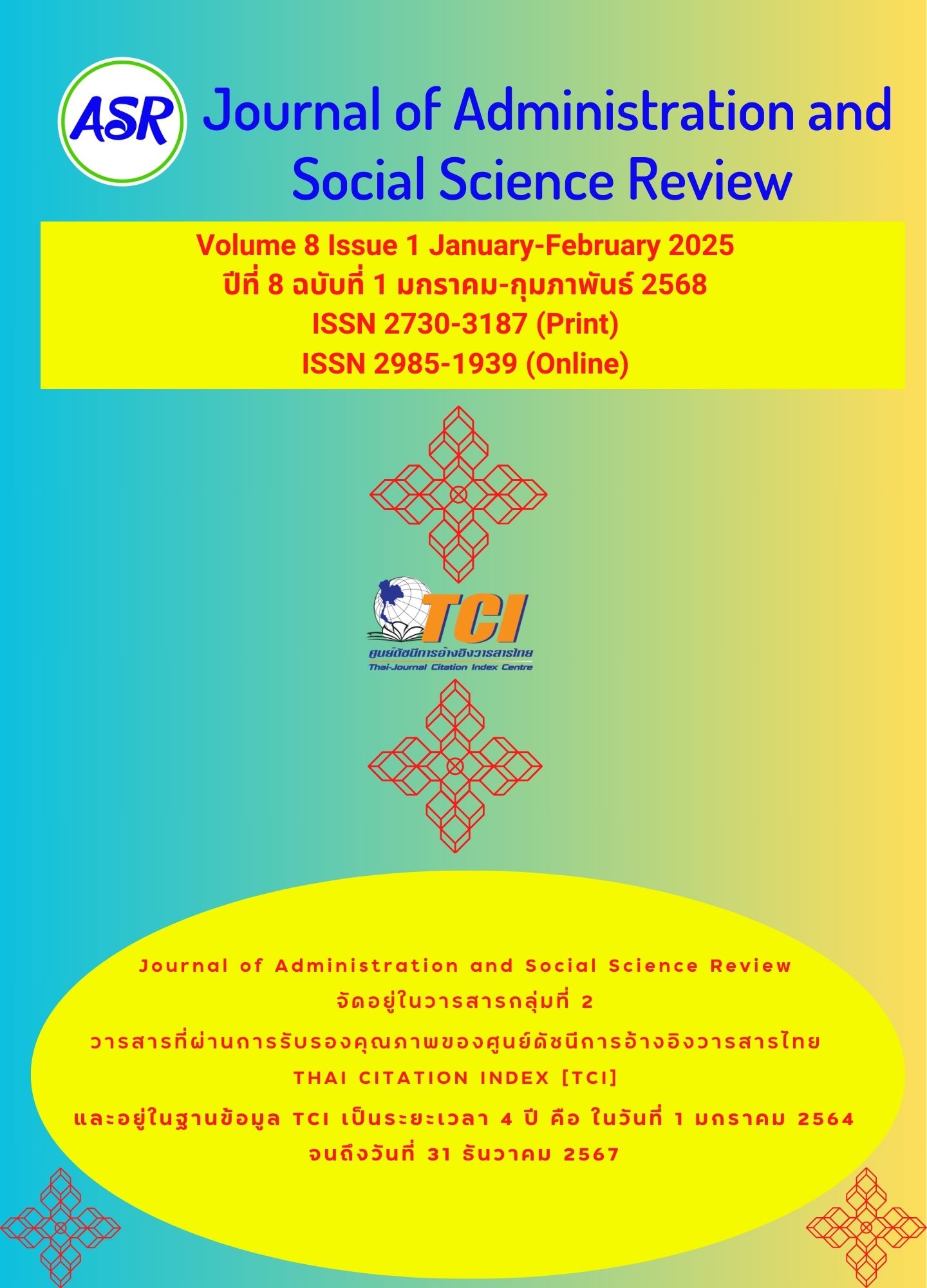Decentralized Leadership Affecting Personnel Management in Educational Institutions under the Jurisdiction of the Chiang Rai Provincial Learning Promotion Office
Keywords:
Decentralized Leadership of Executives, Human Resource ManagementAbstract
This research aimed to study: 1) the level of decentralized leadership of educational administrators, 2) the level of personnel management of educational institutions, and 3) the effect of decentralized leadership for personnel management of educational institutions under the Office of Non-Formal and Informal Education, Chiang Rai province. This research was descriptive. The sample group in the research consisted of teachers and personnel from educational institutions under the Office of Non-Formal Education Promotion in Chiang Rai Province for the fiscal year 2023, totaling 233 individuals. The research tool was a questionnaire. The statistical methods used in the research included percentage, mean, standard deviation, and stepwise multiple regression analysis.
The research results indicated that
- The respondents were predominantly female. Most participants were aged 30–39. In terms of education, the majority held a bachelor's degree. Regarding work experience, most had 10 years or more.
- The overall level of decentralized leadership among educational institution administrators was very high (
= 4.52, SD = 0.50).
- The overall level of personnel management in educational institutions was high
(= 4.48, SD = 0.52).
- Decentralized leadership factors affecting personnel management in educational institutions under the Office of Non-Formal Education Promotion in Chiang Rai Province included teamwork culture (β = 0.521), self-awareness and awareness of others (β = 0.281), and shared vision (β = 0.278), with statistical significance at the 0.05 level. Together, these three variables could predict 81.1% of the variance in personnel management within these institutions.



